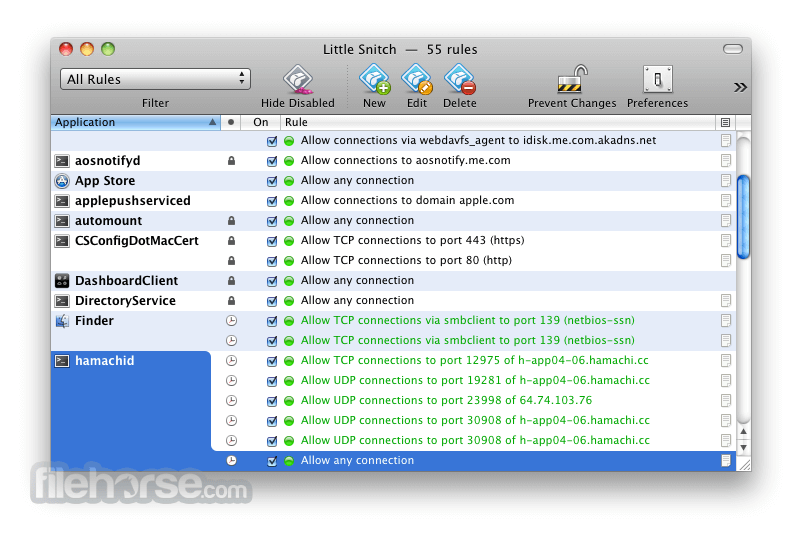Little Snitch Deal
Posted : admin On 03.01.2021'Little Snitch informs you whenever a program attempts to establish an outgoing Internet connection. You can allow or deny these connections, or define rules to handle future attempts automatically. You can allow or deny these connections. Whenever an app attempts to connect to a server on the Internet, Little Snitch shows a connection alert, allowing you to decide whether to allow or deny the connection. No data is transmitted without your consent. Your decision will be remembered and applied automatically in the future.
Little Snitch Discount Code
- How to block Little Snitch from calling home and killing numbers:
- 1. The first step is to block Little Snitch with Little Snitch. Create two new rules in Little Snitch as below:
- a) Deny connections to Server Hostname http://www.obdev.at in LS Configuration. The address that will appear if you do it correctly is 80.237.144.65. Save.
- and the next is:
- b) Deny connections in LS Config to the application Little Snitch UIAgent (navigate to /Library/Little Snitch/Little Snitch UIAgent.app, any server, any port.
- 2. After that is done, open the Terminal (in your Utilities) and paste in:
- sudo /Applications/TextEdit.app/Contents/MacOS/TextEdit /etc/hosts
- (Hit return and type in your admin password). A TextEdit window will open behind the Terminal window. Command+Tab to it - this is your hosts file.
- 3. Place your cursor at the end of the text there, type or leave one vertical space and paste in the following:
- # Block Little Snitch
- 4. Close TextEdit, hit Command+Tab to return to the Terminal window, and paste in the following:
- sudo dscacheutil -flushcache
- 5. Hit the Return key and quit Terminal. You're finished now.
- 6. Easy, isn't it. If only everyone would do this, the developer would cease and desist from killing the number that you personally are using successfully on your Mac. At least until the next version is released…
Live auto tune sond deck. Latest Version:
Requirements:
Mac OS X
Author / Product:
Objective Development Software GmbH / Little Snitch for Mac
Old Versions:
Filename:
LittleSnitch-3.6.dmg
MD5 Checksum: Mac little snitch app.
88f95ddd7c3e4b7819e7110a8136713a

Little Snitch Deal Game
Little Snitch informs you whenever a program attempts to establish an outgoing Internet connection. You can then choose to allow or deny this connection, or define a rule how to handle similar, future connection attempts. This reliably prevents private data from being sent out without your knowledge. Little Snitch for Mac runs inconspicuously in the background and it can also detect network related activity of viruses, trojans and other malware.
Features and Highlights
Silent Mode – Decide Later
There are times where you don’t want to get interrupted by any network related notifications. With Silent Mode you can quickly choose to silence all connection warnings for a while. You can then later review the Silent Mode Log to define permanent rules for connection attempts that occurred during that time.
Research Assistant
Have you ever wondered why a process you’ve never heard of before suddenly wants to connect to some server on the Internet? The Research Assistant helps you to find the answer. It only takes one click on the research button to anonymously request additional information for the current connection from the Research Assistant Database.
Automatic Profile Switching
Rules can be arranged in different profiles like “Home”, “Office” or “Mobile Internet”. This allows you to use different sets of filter rules depending on the network you are currently connected to. Profiles can be activated either manually from the status menu, or automatically, whenever you join a network that’s associated with one of your profiles.
Firewall for incoming connections
Little Snitch for macOS not only reveals any outgoing network connection attempt to make sure that sensitive data doesn’t leave your computer without your consent. The inbound firewall in LittleSnitch provides you with the same level of control for incoming connections.
Note: Requires 64-bit processor. The demo runs for three hours, and it can be restarted as often as you like. The Network Monitor expires after 30 days.